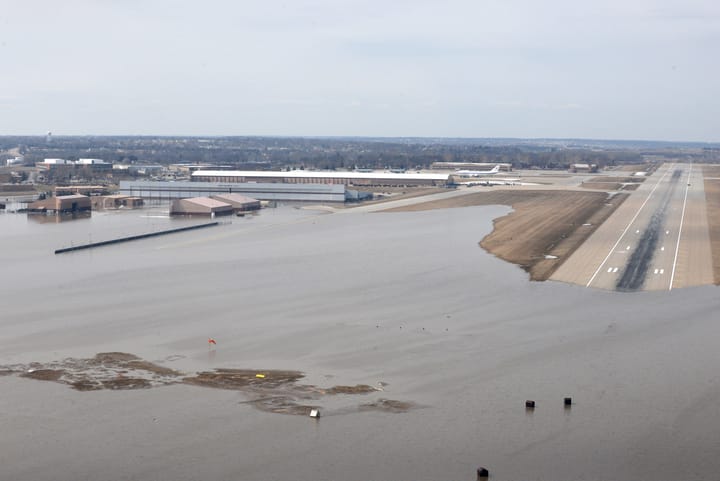With its level of operations at issue in court and in front of town boards, why has there been so little effort to document what's actually happening at the airport?
∎ ∎ ∎
Even in a world awash with ambiguity and confusion, there are at least a few things we know with certainty.
For example, we know that airplanes are not small, or quiet. They have mass and volume. They generally do not possess a Ninja-like ability to escape detection by human eyes and ears. And very few, if any, are equipped with that cloaking device that so often proved useful to the Romulans in their many battles with the starship Enterprise.
Given that airplanes comport with the laws of physics (on Earth, at least), why is it so hard to know precisely how many takeoffs and landings there are each year at Great Barrington Airport (GBR)? And, by extension, how much flight traffic from GBR fills the skies above the town and region every day?
Put simply: How busy is the airport?
That straightforward question has remained largely unanswered. It’s befuddled the community for years—if not decades. Yet it’s central to years of complaints from those nearby and further afield that are currently being litigated and evaluated in multiple venues. That includes an ongoing zoning-enforcement case, now in state Land Court, in which a group of airport neighbors—some of whom have lived nearby for more than half a century—argue the airport has expanded, both with new buildings and substantially increased flight activity, far beyond what’s permitted under its status as a preexisting nonconforming use in a residential neighborhood. (For an explanation of those issues, see Part One and Part Two of this series.)
They say that growth has meant increased noise and nuisance to the point of not being able to enjoy their own homes on a nice day. They also have concerns about the environment, impacts on the neighborhood, plane crashes, and what the future may hold if the airport’s operations remain unchecked.
And while the airport’s owner, Berkshire Aviation Enterprises (BAE), and its staff acknowledge increased activity at least since the start of the COVID-19 pandemic—neighbors say things changed much earlier—particularly from a busier flight school, they and other airport advocates say it pales in comparison to the level of activity of earlier eras.
But those claims of more or less activity, past and present, by both airport supporters and its critics have never been documented or confirmed. Yet this question is at the heart of the Land Court case and, by extension, will be central to the airport’s third special-permit application—one that its attorneys suggest is needed to derail current and future efforts to limit activities at the privately owned airport.
That special-permit request, as explained to me and to various town boards by airport attorney Dennis Egan, seeks to permanently enshrine that undefined status quo. “This is essentially looking to lock-in what’s happening at the airport currently,” Egan told the Planning Board in January. He suggested the airport, in exchange for the lifting of existing—if long unenforced—zoning restrictions, will agree to “reasonable conditions” like a ban on continuous takeoff-and-landing training in early mornings and the evenings, no helicopter school, and a prohibition on all but the smallest jet aircraft.
Yet what’s happening “currently” has never been described by Egan. Nor is it detailed in the airport’s special-permit application filed last month with the Selectboard. Indeed, when Board of Health Chair Michael Lanoue asked Egan on February 9 how much activity takes place at the Great Barrington airport compared to the one in Pittsfield, he demurred. “It’s a small airport. I don’t have an exact number for you,” Egan said.
Seeking the support of the Planning Board last month—which was granted unanimously—Egan also insisted that the application is different than those submitted by the airport in 2017 and 2020 because it doesn’t represent “expansion.” That’s because it’s no longer joined with a proposal for new airplane hangars, he said. Yet constructing new hangars are among the things the airport can build and do, by right, if a special permit is granted, pending any conditions the Selectboard might attach.
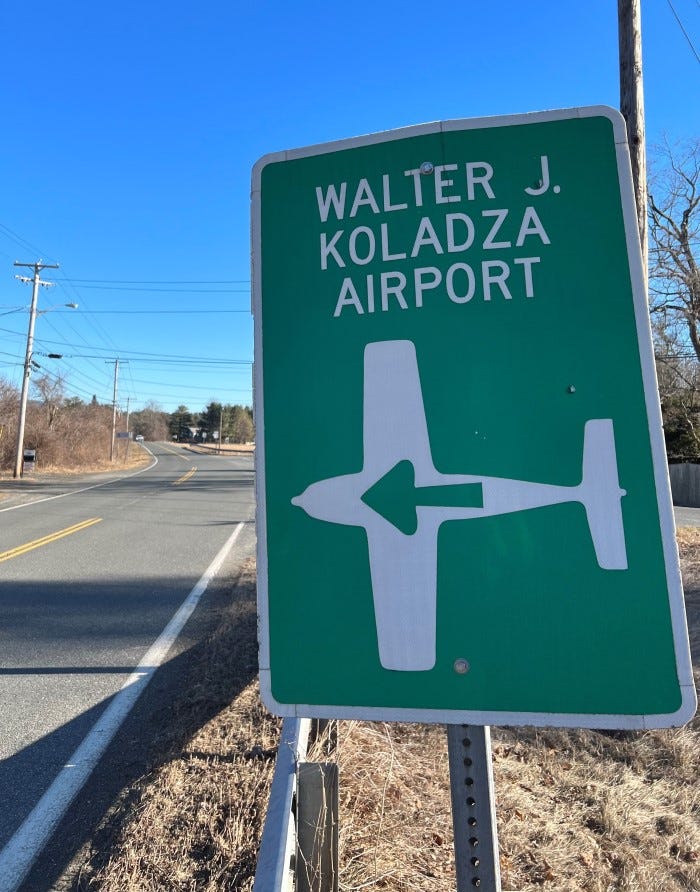
In fact, as noted in Part One of this series, the zoning-bylaw provision under which the airport seeks recognition allows “an aviation field, public or private, with essential accessories” in the R4 residential zone. And despite several requests in two phone conversations and multiple emails, both Egan and his colleague at Pittsfield’s Cohen Kinne Valicenti & Cook, Christopher M. Hennessey, declined to comment on whether those “essential accessories” include not just hangars but also things otherwise prohibited in R4 but commonly seen at airports. That includes restaurants, industrial and office parks, and other airport-related uses.
(Separately, the airport has claimed in recent court filings that it is exempt from the Great Barrington zoning bylaw entirely and can’t be regulated by the town.)
To continue the science-fiction theme, the airport’s communications strategy seems to be inspired by that iconic “Star Wars” scene when Obi-Wan Kenobi uses his Jedi powers to control the minds of two Empire stormtroopers and save his pals C-3PO and R2-D2. “These aren’t the droids you’re looking for,” he instructs the helpless stormtroopers, who seconds later agree that all is well. Here in our galaxy, that’s become, “These are not the hangars or growth in operations you were concerned about in 2017 and 2020.”
The fundamental question of how busy the airport is—or isn’t—has always been answered by both airport critics and supporters in vague terms. What’s offered are still estimates, unproven recollections from history both recent and ancient, and gut feelings. Without evidence, to use a phrase George Orwell deployed in a related context, these claims might be reasonably dismissed as “pure wind.”
A history of flight-operations numbers at GBR
A quest to understand why there are no useful numbers could start with a short visit to 2008, when, following the death of former airport owner Walter J. Koladza, the airport was bequeathed to a group of four pilots and aircraft mechanics. Not long after taking over, they completed a detailed survey circulated by the Aeronautics Division of the Massachusetts Department of Transportation (MassDOT). Called the “Airport Inventory and Data Survey,” it was an 18-page document that asked a host of questions about Great Barrington Airport, its operations and finances, and what obstacles to expansion it faced—including whether that included difficulties with its host community.
The survey data from airport managers was used to produce the 2010 “Massachusetts Statewide Airport System Plan” (MSASP), a large, technical report that analyzed the state of aviation and airports in the Commonwealth and laid out plans—and funding justifications—for the future.
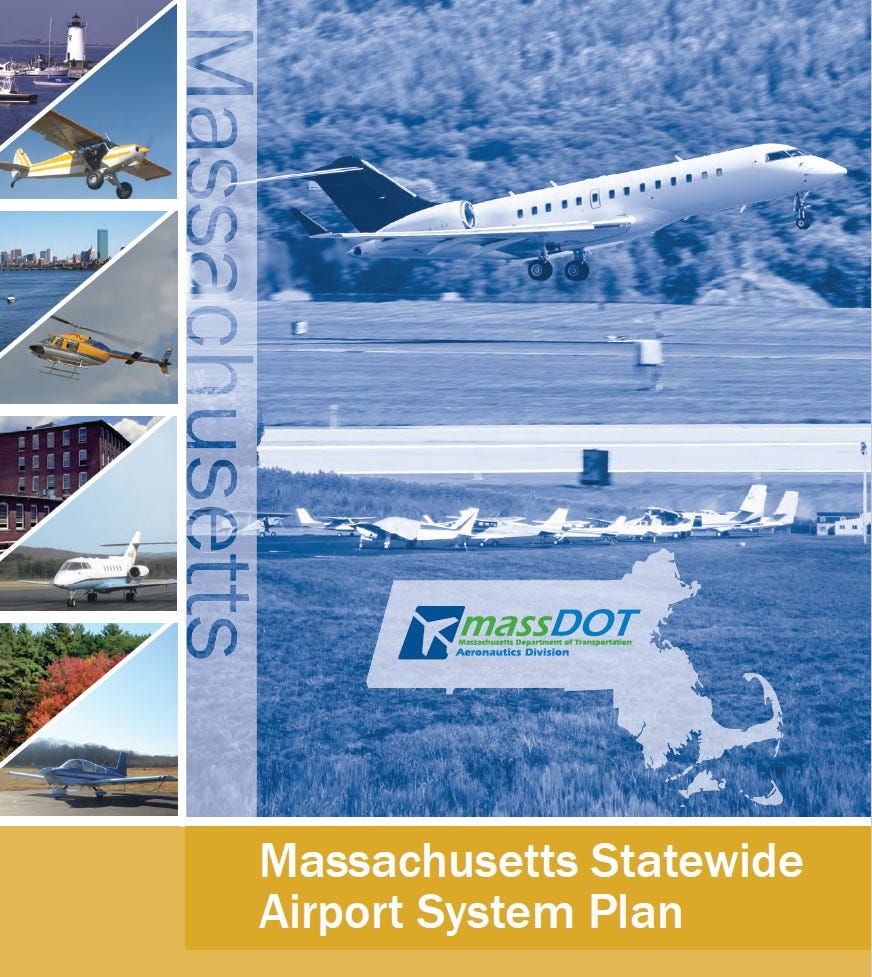
The Aeronautics Division is the state regulator of aviation in Massachusetts, though much of what happens in the sky is regulated by the Federal Aviation Administration (FAA). The first sentence on the Aeronautics website makes plain its mission: “We promote aviation throughout the Commonwealth.” The agency, with a staff of 11, “support[s] public-use airports”—excluding the three largest—which are those open to all pilots, assuming they have an aircraft appropriate to the length of the runway and other conditions. Public-use airports can be privately or municipally owned; for example, Pittsfield owns and operates the municipal airport in that city.
The 2010 MSASP report was followed in 2011, 2014, and 2019 by complementary economic-impact studies meant to provide evidence that can be used by airports across the Commonwealth, and by Aeronautics, to justify new and ongoing investments. That’s a consistent theme of Aeronautics over decades; its website in 2009 championed spending state and federal money on airports as “a powerful ‘bang for the buck’ for the Massachusetts economy.”
A 2009 PowerPoint presentation by Christopher J. Willenborg, then the executive director of the Aeronautics Division, at a Massachusetts Airport Management Association conference summed up the goals of the MSASP this way: “Provide a safe and efficient airport system that accommodates demand, supports economic and transportation needs, and maximizes funding resources.”
Six years later, Willenborg would move over to Airport Solutions Group (ASG), a consulting firm that, among other things, helps airports secure and spend those maximized state and federal funding resources. (Documents acquired via public-records request from MassDOT show that ASG and Willenborg have, at minimum, helped BAE with grant applications to the state. Today Willenborg is the airport manager at Westfield-Barnes Regional Airport.)
There’s little argument that aviation and air travel are an important part of the economy and of everyday life. Most people in our region—no doubt including those upset about the intensity of operations and other issues at GBR—are glad they can head to an airport in Albany or Hartford or Boston and, in a relatively short period of time, be somewhere else and that well-trained pilots are at the controls of the aircraft transporting them to those somewhere elses.
It’s also not surprising that a state agency would seek to increase its budget and resources. That’s the nature of government bureaucracy, both in fulfilling any statutory mission established by a legislature, and also at a Darwinian or even spiritual level, seeking to protect its turf and perpetuate itself.
Marc Fasteau, who lives on Seekonk Cross Road near the airport and is one of the plaintiffs in ongoing legal action aimed at limiting its operations, told me that in his view, the Aeronautics Division is “a classic case of regulatory capture,” where an agency and those it oversees are too closely tied to one another. Those who work in government soon end up on the other side of the table as industry consultants, and vice-versa, as Willenborg did. “[Aviation] is not a big issue in the state, nobody really cares a lot, so it’s a revolving door,” Fasteau said, suggesting such relationships get little scrutiny.
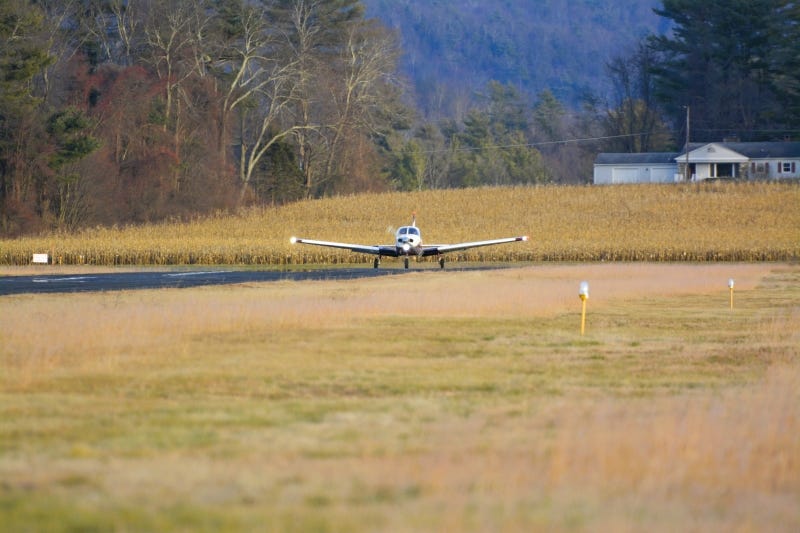
The same charge is made about other state and federal regulatory agencies, including the FAA) Indeed, in the wake of two Boeing 737 Max crashes in 2018 and 2019 that took the lives of 346 people, many were surprised to learn that FAA safety approvals are sometimes left up to engineers from the very companies, like Boeing, that the agency oversees.
What’s intriguing and relevant about the MSASP and its follow-on economic-impact studies issued by Aeronautics over the last decade—including those touted by local airport advocates as evidence of GBR’s economic contribution to the region—is that the econometric models used to calculate both economic impact and future levels of airport activity rely, as their most fundamental input, on the number of annual flight operations. Yes, that’s the same elusive sum of annual takeoffs and landings that has, for decades, largely been guessed at, estimated, and otherwise—forgive me—pulled from the air. (These studies are examined more closely later in this series.)
What is a flight operation? (It’s unrelated to medical-transfer helicopter flights, a subject also discussed later in this series.) A sightseeing tour over the Berkshires at peak foliage that starts and ends at the airfield on Egremont Plain Road counts as two flight operations. And a flight-school lesson that, over an hour or so, includes five takeoffs and five landings is 10 operations.
At towered airports under the supervision of air-traffic controllers, flight operations are logged and the data is specific. However, at non-towered airports like Great Barrington and many others in the Commonwealth, they’re not. That’s because the airport may not always be staffed, and when it is, employees may be busy doing other things.
According to BAE majority owner Rick Solan and former part-owner Edward Ivas—a pilot and aircraft mechanic long associated with the airport as an employee, flight instructor, and constant presence since the late 1960s—over the years the airport’s staff has tried to keep track. At times that meant making entries in a logbook in the office whenever an aircraft touched down or took off—if someone was around to do it. And then adding in estimates of flight-lesson takeoffs and landings, helicopter and fixed-wing charter flights, and other activity.
The number of annual flight operations is reported to the FAA during each airport’s required, once-every-three-years inspection. It’s called a “5010,” after an FAA form, and the report produced also includes important runway and approach details for pilots, radio frequencies for communicating with the airport, fuels available for sale, as well as the total annual flight operations. For Great Barrington, that number is subdivided into “local,” for flights that start and end at GBR; “itinerant,” those arriving from elsewhere for fuel, to visit, or for aircraft maintenance; military, like those Army National Guard helicopters that sometimes perform disruptive training maneuvers here at night; and any air charter and air taxi flights.
Over the years, numbers provided to FAA by the owners of BAE have varied wildly—even exponentially. Solan told me last fall that they do their best to estimate by considering, for example, how many active flight-school students they have and how often they do continuous takeoff-and-landing practice, which can produce a large number of operations. He said they don’t have the staff resources to do an actual count of planes as they come and go.
In the 2009 survey that BAE completed for MassDOT, which the Argus obtained from the agency via a public-records request, the airport reported an astonishing 128,900 annual flight operations. While that may look like a typo, its constituent parts listed in an Excel sheet provided by MassDOT revealed it not to be: 80,000 annual flight operations were deemed local; 47,000 were itinerant; there were purportedly 1,500 air-taxi flights; and another 400 military flights that touched down and then departed.
That total would represent a takeoff or landing every two minutes for 12 hours a day, 365 days a year. By comparison, Boston Logan Airport, a major international hub, reported 350,870 flight operations for the 12 months ending July 2019. If that 128,900 takeoffs and landings were actually taking place each year at Great Barrington Airport, it’s safe to assume there’d be a crowd of local residents banging on the door of the state Land Court demanding action.
BAE’s most recent 5010 data provided to an FAA inspector last July put the annual total at a far humbler 12,275. So, it’s clear that 2009 number for GBR was wildly overstated, perhaps by as much as a factor of 10, depending on the accuracy of last July’s estimate. But to return to where we started: Who’s to say if last August’s number, or any other, is remotely accurate? And how can town officials make any judgements on policies or special permits without good information?
News accounts going back to the 1930s characterize flight activity at the airport imprecisely, anecdotally, or occasionally with numbers provided by Koladza, the former F4U Corsair test pilot who owned the airport from 1945 until 2004. Over the years, Aeronautics officials have also sometimes chimed in with their own numbers.
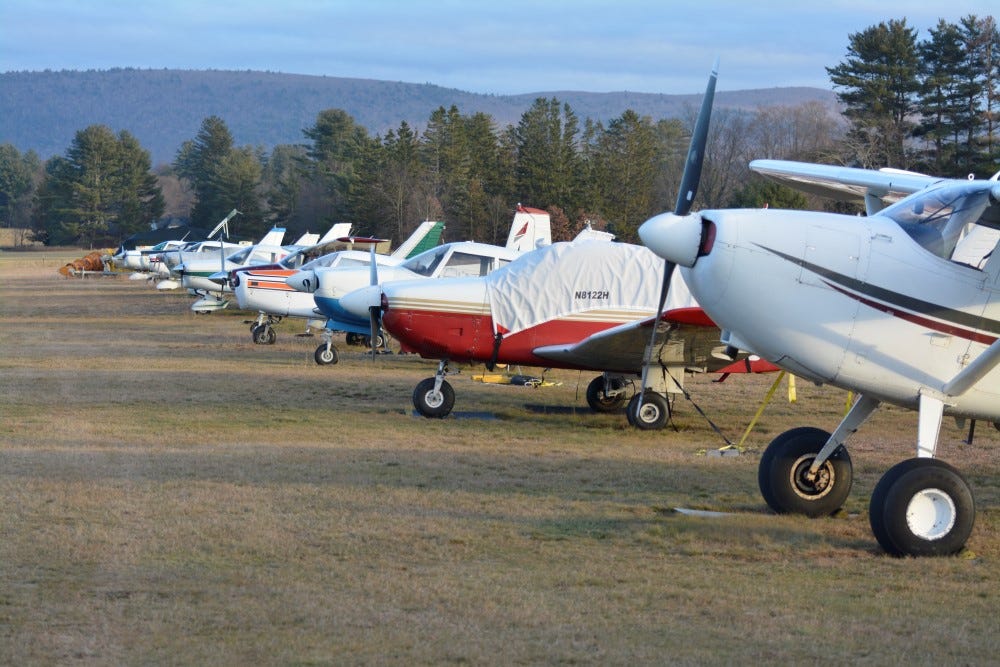
In the 1960s, Koladza claimed 30,000 takeoffs and landings a year were happening at his airport. In 1979, an Aeronautics official told the Berkshire Eagle there were 37,000 annual operations. Ivas told the Selectboard in 2017 that he recalled operations reaching 58,000 during the height of post-Vietnam GI-Bill-funded training in the early 1980s, when the airport had roughly the same number of flight instructors that it does today: five full-time and three part-time.
Ivas’s 58,000 would mean a takeoff or landing every four-and-a-half minutes for the same 12 hours a day year-round—once again assuming no rain, high winds, low cloud ceiling, or snow. He had a colorful recollection that, if accurate, would change that math: He told me last week that there was such intense demand for pilot training as those Vietnam-era GI Bill benefits were nearing expiration that he recalled times when the airport’s flight school was running three eight-hour shifts a day. Even if that’s an embellishment, he said he was busy enough to log 1,000 hours a year in the cockpit.
These operations figures are consistent in only one way: They’re delightfully round numbers. Which is a useful reminder that flight-operations totals at GBR have long been a guessing game. And at different times, may have sprung from the ether for marketing purposes—as when Koladza was buying new planes to expand BAE’s air-charter services in the 1960s. Or perhaps to help navigate a town-board process (lower to suggest all’s quiet on the airport front, or higher to establish a baseline for any limits imposed). Or, as airport neighbor and critic Anne Fredericks said is her belief, to help secure grant funding (e.g. show a very busy airport).
MassDOT spokesperson Kristen Pennucci told me last summer that the number of flight operations is not a factor in the agency’s grantmaking decisions. “MassDOT does not base grant decisions on the number of operations at an airport or by an airport classification but on the needs for the airport project based on safety, security, age or condition of equipment and environmental sustainability,” she said.
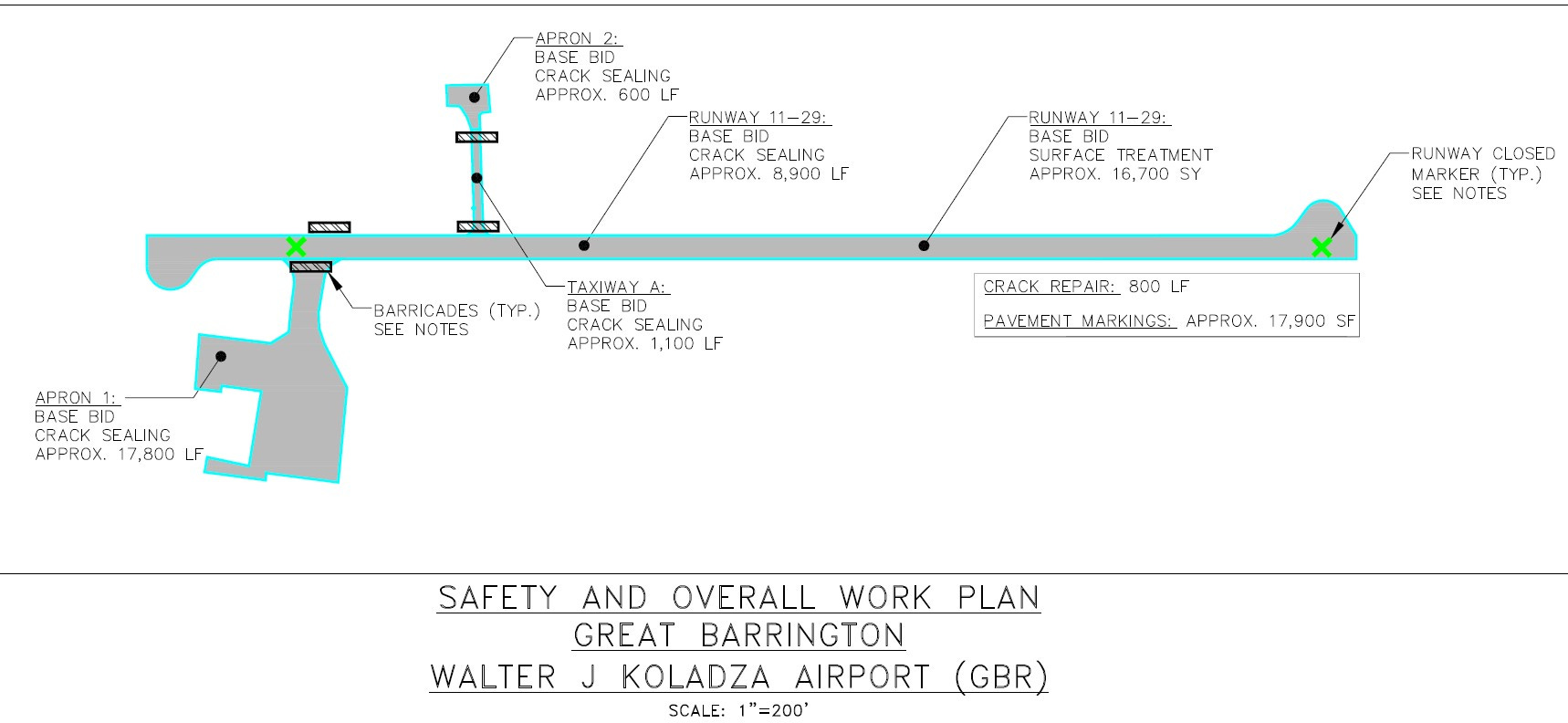
Still, that 128,900 flight-operations estimate came not long after the airport applied, in September 2008, for an $830,000 state grant to repair and fully re-pave its runway, according to documents obtained by the Argus. The grant was not awarded. Though last year, as part of a statewide MassDOT grant, the runway’s cracks were repaired, its stripes and markings were re-painted, and all 2,579 feet were resurfaced at a cost to taxpayers of $197,332, according to documents obtained by the Argus via public-records request.
Because it was a statewide Aeronautics grant, there was no requirement for BAE to submit a grant application. That meant no commitments were required like those commonly attached to state grants under MassDOT’s Airport Safety and Maintenance Program, Pennucci told me. Known as “grant assurances,” they ensure investments of state funds are protected by requiring recipient airports to agree, typically for 20 years, to continue operating the airport, maintain compliance with local zoning and other laws, and make a variety of other legally binding commitments.
Pennucci told me in an email last summer that those grant-assurance requirements may be added for future work. “The Aeronautics Division is working with our legal team to change that process in the future and have all airports sign MassDOT state grant assurances for any work performed at their airport that is funded by the state,” she wrote.
That opportunity might just arrive soon: A February 2022 report prepared by a MassDOT consultant under a related statewide grant, and obtained by the Argus, recommended that Massachusetts spend $3.2 million on a “major rehabilitation” of the runway and taxiways at Great Barrington.
Methods for estimating flight operations
BAE’s estimates of flight operations have varied widely over the years and might support almost any of the theories put forward about their genesis. In 2008, the number reported was 28,910 takeoffs and landings per year. That total was used in the statewide airport system plan, ignoring the six-digit, miniature-Boston-Logan level of activity submitted by BAE in the data-collection survey. A few years later, the FAA’s 5010 summary showed GBR’s reported annual total for the year ending August 15, 2016 to be 41,500—claiming 35,000 local flights and 3,500 military-related flight operations. In 2019, as the airport prepared to again go before town boards after withdrawing an earlier special-permit application in 2017, the information reported to the FAA was 17,700 annual flight operations.
And despite an acknowledged increase in operations at the airport in recent years from pandemic-era interest and a growing flight school, last summer, BAE provided the FAA with perhaps the lowest estimate in its history: that total of 12,275 annual operations, broken down as 10,000 local, 2,000 itinerant, 175 air taxi, and 100 military. That would average less than three takeoffs or landings an hour per 12-hour day, something even a cursory review of activity at the airport would suggest is an undercount.
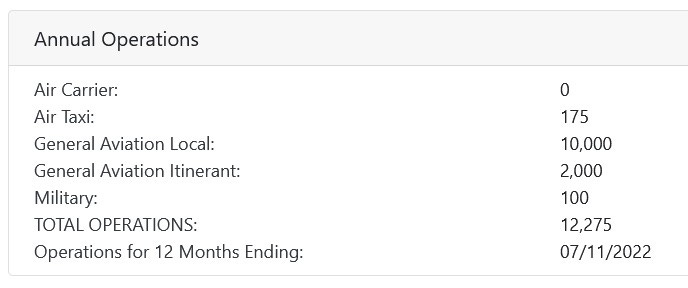
How do airports settle on these numbers? Recommended models for estimating flight traffic at nontowered airports are varied, and may include formulas that rely on data points like fuel sales and the number of based aircraft—that is, planes that make an airport their permanent home via hangar space or outdoor tie-down. A 2015 study commissioned by the Airport Cooperative Management Program (ACMP), a project of the National Academies of Science, examined that based-airplane model as well as others, including use of counting technologies like runway-side microphones that listen for engine noise that’s consistent with takeoff, or that combines video-image detection with data broadcast from aircraft transponders. That study, which was completed before newer aircraft-data transmitters were in wide use, rejected the based-planes model and recommended a sampling approach for untowered airports: four two-week periods of making actual counts (one period per season) and then extrapolating to an entire year’s estimate.
In an interview late last year, an FAA spokesperson told me there are various “rules of thumb” for flight-operations estimates, including those examined in the ACMP study. “There’s a lot of variability to it,” he said, conceding that numbers provided by most non-towered airports are estimates, and acknowledging that the data is not usually further examined or audited by the agency. During the FAA’s every-three-year airport inspection, the focus is primarily on its safety review. The operations estimate, the spokesperson said, “is not a priority item.”
A counting system already at GBR
Decades ago, it may have been difficult to track and count the number of takeoffs and landings at an untowered airport like in Great Barrington. But times have changed. Manual counts are no longer needed, thanks to a host of new and improving technologies. While Solan has in the past told the Selectboard that only estimates of flight traffic are available, since 2014 the airport has had technology in place that could, if used fully, provide more detailed information.
According to contract documents obtained by the Argus in response to a public-records request, the Aeronautics Division has over the last decade purchased systems known as G.A.R.D., or General Audio Recording Device, and installed one at most, if not all, of the 35 public-use airports it oversees in the Commonwealth. Developed a decade ago by Invisible Intelligence, a company founded in the wake of a 2012 fatal crash at Knox County Regional Airport in Owls Head, Maine, the system, which retails for $6,995, connects to an airport’s Unicom communications system and records all radio traffic between the airport and pilots. And then it gets quite clever: Because pilots make regular radio announcements as they prepare to take off or land, G.A.R.D.’s software analyzes the captured audio to produce a count of the number of flight operations.

The system produces charts, graphs, and reports with hourly, daily, monthly, and yearly traffic totals. “This information is more accurate than noise meters and a great deal better than the guesstimate of operations that many folks give [FAA] inspectors,” the company says on its website. A recently introduced add-on can also capture additional information broadcast by aircraft transponders.
Testimonials from airport managers posted on the company’s website describe how useful and eye-opening it can be. “I am extremely pleased with the ease of use and the accuracy of the counts that the system generates,” wrote Tom Strong, who manages the Jackson County Airport in Jefferson, Ga. “We had initially thought that our airport had about 10-15 daily operations on average. Turns out that we are closer to 25 operations per day with some well over 80,” the testimonial says.
A 2019 MassDOT contract with Invisible Intelligence reviewed by the Argus called for deploying G.A.R.D. to any airports still without it and making upgrades to existing systems.
Solan told me that the airport’s G.A.R.D. system is still connected and operating but it’s never been used for traffic-counting purposes. “We don’t do the counting part,” he said. He confirmed it needs an upgrade but suggested that because his is a privately owned airport, it’s not a high priority for MassDOT. “They haven’t come to service it. We have the equipment, but it needed to be upgraded and they just didn’t come to upgrade it,” he said. The system still records transmissions, Solan told me, and the audio can be used in the case of accidents or incidents to help investigators analyze relevant communications.
Pennucci, the MassDOT spokesperson, confirmed that GBR’s system, which was installed in the summer of 2014, has not yet been upgraded. “No records indicating that it was expanded or upgraded in 2019 were found,” she told me earlier this month. It’s unclear if or when MassDOT will pay for what appears to be a relatively inexpensive upgrade to a system that, even when new and fully outfitted with all available features, costs only $12,200.
A detailed data analysis
In the years since a G.A.R.D. device was installed at GBR, other useful data sources have become available to analyze flight traffic. As part of this series, the Argus undertook a comprehensive analysis of public flight-tracking data from the last three years, along with based-aircraft reports and other resources acquired via public-records requests, to better understand flight activity in Great Barrington.
The flight-tracking data was provided by FlightAware, a company whose mobile app and website many travelers use to see if a commercial flight is on-time or a loved one’s arrival has been delayed. (DISCLOSURE: FlightAware provided some data used in the Argus analysis at no charge. Additional information was acquired for a fee and from other publicly available sources.)
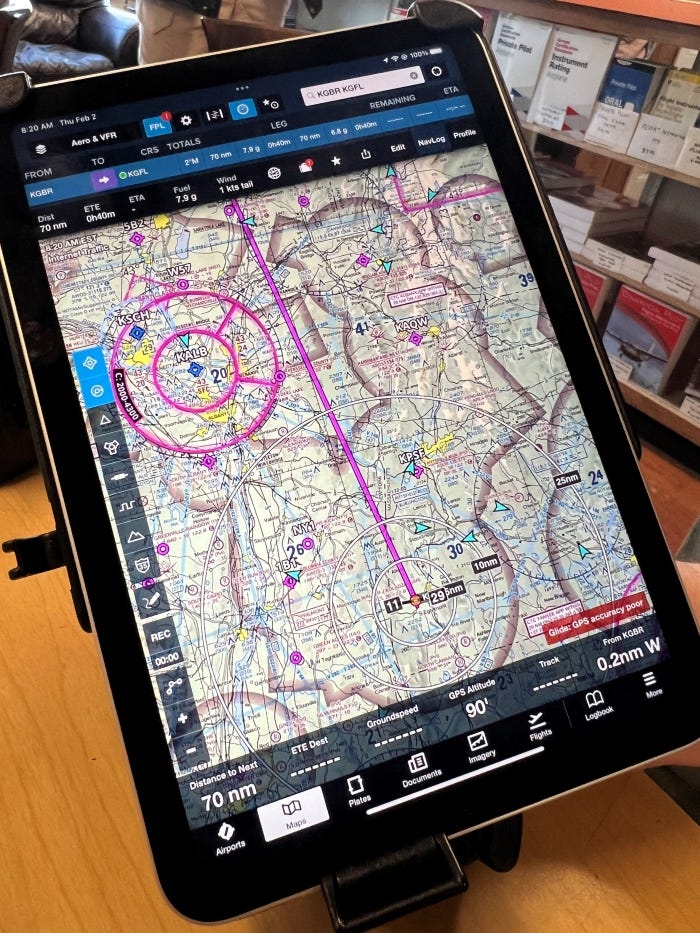
FlightAware’s various applications rely on tens of thousands of receivers around the world that capture data transmitted multiple times per minute by operating aircraft that are outfitted, at minimum, with a GPS-based ADS-B Out (“automatic dependent surveillance—broadcast”) device. The data includes the aircraft identifier, precise latitude and longitude, airspeed, altitude, and heading. Pilots and air-traffic controllers use the information for collision-avoidance and traffic management, making the skies safer. Staff at GBR showed me a tablet they use when airborne that, thanks to ADS-B, displays continuously updated location and altitude for nearby planes.
Federal law mandated that ADS-B Out technology be installed by January 1, 2020, in any aircraft that operates in certain types of regulated airspace. Once ADS-B Out is installed, that law also requires that it be enabled for every flight: It must be activated as soon as an aircraft begins to taxi and continue to broadcast until the flight is concluded.
The area commonly used by general-aviation aircraft around Great Barrington is known as uncontrolled airspace and doesn’t require ADS-B Out. Still, most planes based at GBR have the technology, according to the airport’s owners and staff, because of its useful safety features. It also means pilots can fly anywhere without inconvenient, fuel-burning detours around ADS-B-Out-required airspace.
All current and recent aircraft used by BAE for its flight school, with the exception of one older Piper Cub, have at least the minimum-required ADS-B-Out transmitter. That permits a closer examination of flight school activity, in particular, since January 1, 2020.
The FlightAware data has some limitations. For example, some planes traveling to and from GBR don’t have ADS-B Out installed and therefore aren’t tracked. And as more planes are outfitted with the technology over time, they appear in current and future tracking datasets but are absent from older data used for year-over-year comparisons.
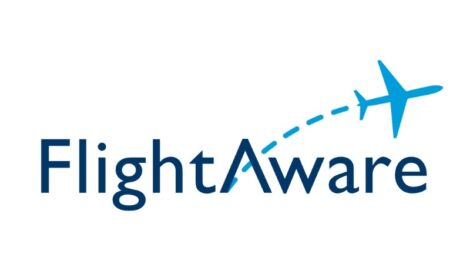
According to data provided this week by an FAA spokesperson, Emma Duncan, from 2019 to 2020, with that January 1, 2020 deadline approaching, the number of ADS-B equipped aircraft increased by 78 percent. It increased another 23 percent from 2020 to 2021, and then by an additional 8.7 percent by January 1, 2022. This past year, the increase was much smaller at 2.6 percent.
As noted, all BAE flight-school aircraft were outfitted with ADS-B Out and tracked by FlightAware as of January 1, 2020. (Rick Solan told me that BAE’s planes are used overwhelmingly for instruction, but they are occasionally rented to other pilots.)
One additional complexity is that while FlightAware logs all positions of an aircraft during a flight, its dataset only notes the initial takeoff and final landing of each flight. For example, the aforementioned flight-school lesson that includes a total of 10 takeoffs and landings is only logged as two “flight operations”—that is, one initial takeoff and one final landing—even though it actually represents 10 operations. That results in a significant undercount of flight-school activity and therefore underestimates the intensity of that traffic in nearby airspace.
Still, the data showing total flights and trends is useful and instructive. And as detailed below, the activity from one BAE trainer last September was also reviewed using FlightAware’s publicly available graphical representation of each flight, which enabled a manual count of all takeoffs and landings that month. That includes those performed during continuous takeoff-and-landing training.
Whether operations of BAE’s flight-school aircraft will still be available for monitoring and analysis remains to be seen. While discussing these findings with airport manager Joe Solan earlier this week, he told me that he’s considering blocking details of BAE aircraft flight operations from FlightAware, citing what he said were “nosy neighbors.” That would, in effect, put a cloak over what’s happening at the airport. Any aircraft owner can add their plane’s tail number to a block list maintained by the FAA, keeping their ADS-B data from public view. They still get the benefit of ADS-B for safety and other purposes, but the tracking data is not publicly available.
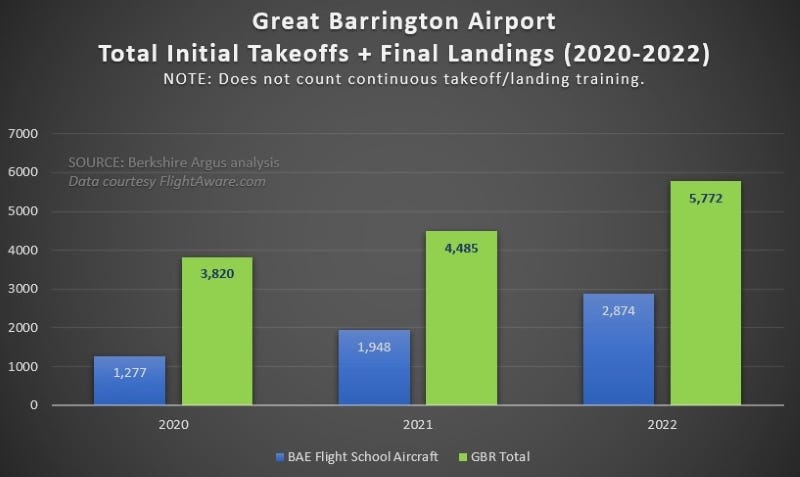
In general, the Argus analysis revealed steady growth in overall tracked flights to and from GBR since 2020; an increase in the number of unique aircraft visiting the airport from a larger number of origin cities each year; and, as expected based on multiple interviews with BAE’s owners and staff, a pronounced increase in the number of flight-school operations and its associated, locally intense traffic.
The tracked-flights data shows a 125 percent increase in flight-school-related flights from 2020 to 2022 and a 51 percent increase overall at GBR. The proportion of all traffic associated with flight-school planes increased from 33 percent of all tracked flights in 2020 to 50 percent in 2022. (Again, these counts only tally the initial takeoff and final landing of each flight, and not any additional takeoffs and landings in-between.)
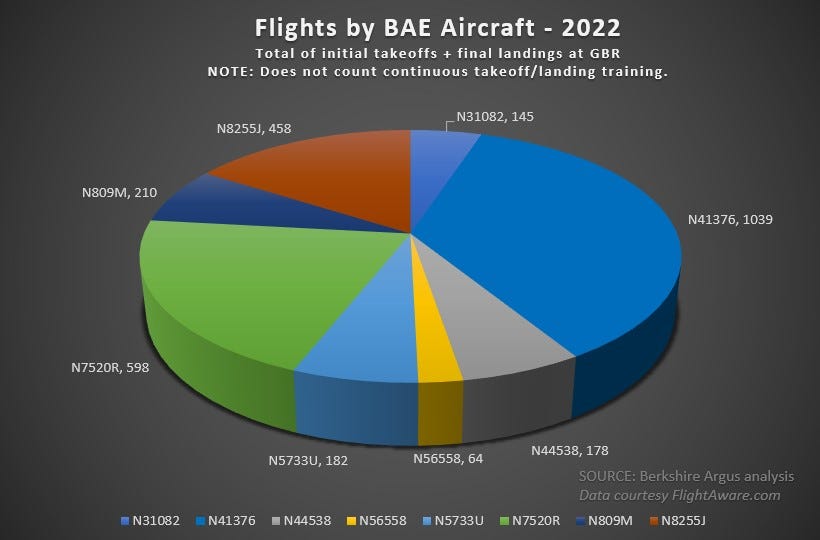
That growth in flight activity has continued into the first two months of 2023, with tracked GBR activity from January 1 through February 20, 2023 increasing by 133 percent over the same period last year. That’s likely in part because of milder weather and less snow, but also because of continued growth in the number of flight-school instructors and lesson activity.
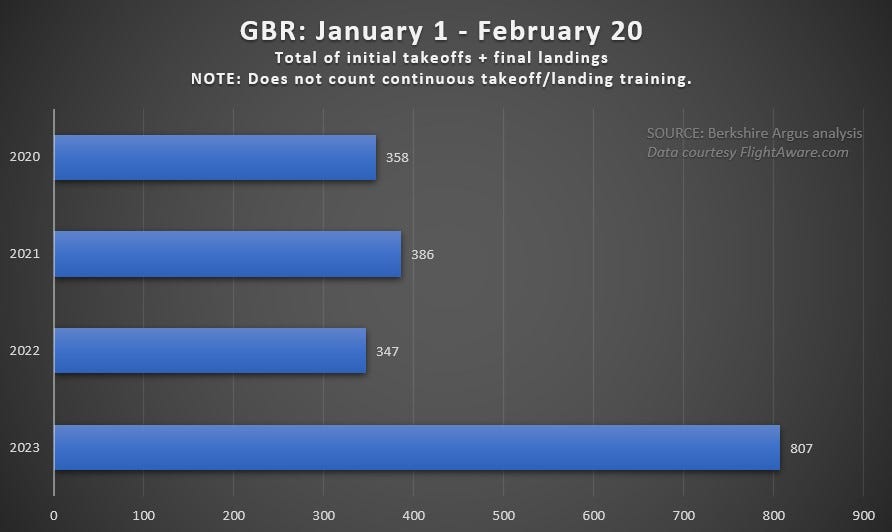
A busy September for N41376
Added to BAE’s fleet last year, tail number N41376 is a 1974 Piper Cherokee Warrior that immediately became the school’s most-frequently-used trainer. An analysis of N41376’s activity from September using FlightAware’s publicly available website that monitors activity at the Great Barrington Airport found a total of 412 takeoffs and landings in Great Barrington over the course of 93 flights.
In FlightAware’s dataset, the aircraft’s total of initial takeoffs and final landings at GBR over those 30 days totaled 172. So, in September, the actual number of takeoffs and landings at Great Barrington by N41376 was 140 percent higher than what’s reflected in the FlightAware data. While that’s useful, every training flight is different; students pursue a variety of training objectives on the way to their various certifications. So that’s not a percentage that can be applied across all FlightAware data.
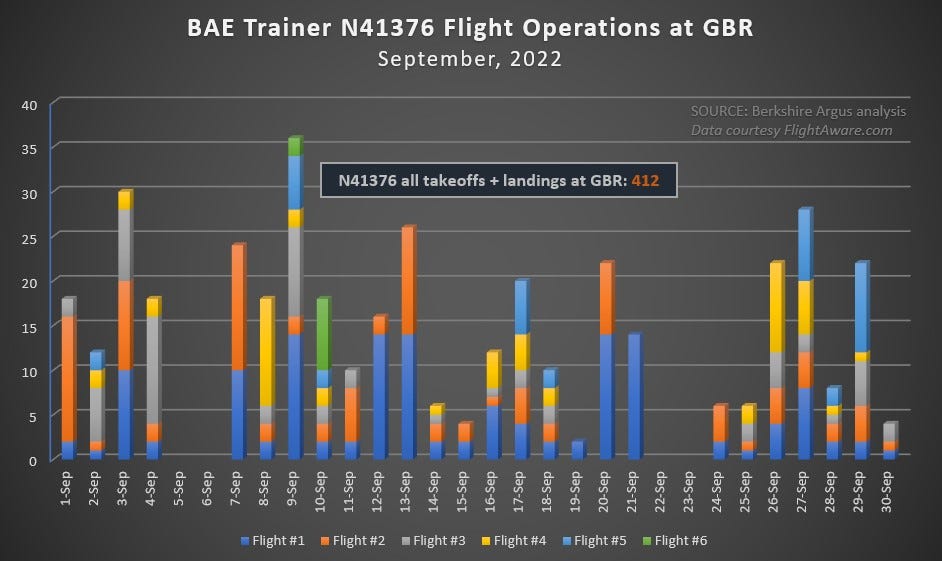
While not all training flights involve takeoff and landing practice at GBR, many do. Again using N41376’s activity last September, there were 21 out of 93 flights, or 23 percent, that performed eight or more takeoffs and landings in Great Barrington. Of those, there were seven training flights that each performed at least 14 takeoffs and landings. Overall in September, each flight of N41376 averaged 4.4 takeoffs and landings at GBR. For close-in neighbors, this is the most intense, repetitive flight traffic as planes stay in the circular flight pattern near the airport and remain at relatively low altitudes.
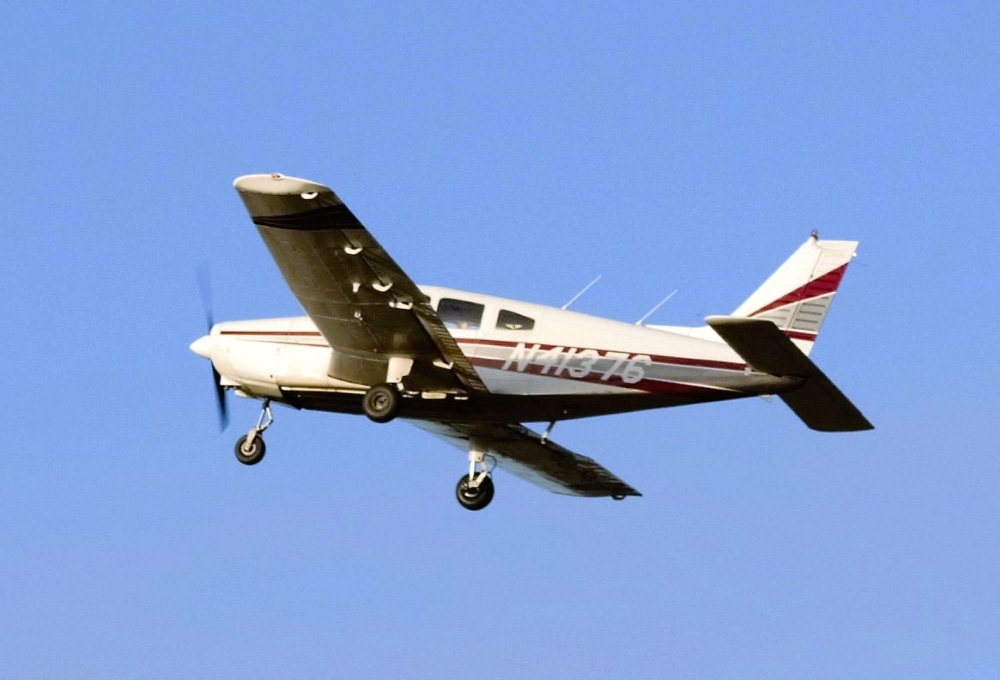
Rick Solan has said the flight school does its best to move some locally intense training to other airports. Of N41376’s 93 flights in September, 18 included continuous takeoff-and-landing practice at Columbia County Airport in Hudson, 11 went to Pittsfield, and four to other airports. In some cases, there was continuous takeoff-and-landing practice at both GBR and another airport during the same lesson.
Overall, FlightAware data show that N41372 logged approximately 75.4 hours in the air that month.
Based aircraft analysis
The Argus also obtained based-aircraft reports for 2014 through 2023 for GBR from MassDOT via a public-records request. In the years before the airport’s first hangar proposal, it was losing based aircraft, with a three-year decline of nearly 30 percent, from 49 in 2014 to 35 in 2017. That could have added urgency to BAE’s efforts to get permission to build hangars to increase revenue—they planned to charge $400 or more per month per plane, far more than the $50 per month it said it charges for outdoor tie-downs.
Yet since then, the number of based aircraft has rebounded, reaching a peak of 53 in 2019 before settling back to an average of 46 for the last few years, according to MassDOT’s data. (Last summer’s FAA inspection of the airport reported only 40 based aircraft, highlighting differences in data reported to and maintained by state and federal regulators.) That suggests this part of BAE’s business is largely holding steady even without new hangars, though BAE has added additional training aircraft. Ten of the aircraft currently based there are registered to BAE, according to FAA records.
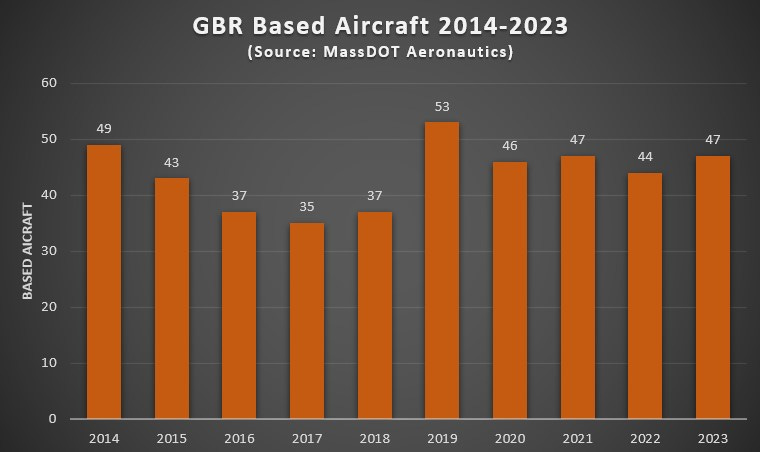
As former airport manager Ken Krentsa told the Selectboard in 2017, many planes based at Great Barrington are not flown more than a few dozen hours per year. He suggested the average for private pilots was an hour of flying per week. An analysis of last year’s FlightAware data for aircraft based at GBR last year largely supports his estimate.
Among all GBR-based aircraft, which includes 14 owned by BAE and minority partner Jim Jacobs, in 2022, flight-school aircraft made up 76 percent of initial takeoffs and final landings. On average, the other airplanes each logged just under 20 initial takeoffs and final landings, based on the FlightAware data. Since a few based aircraft are not equipped with ADS-B Out, and are therefore not tracked, the actual per-based-plane operations for non-flight-school aircraft is likely slightly higher, and the portion attributable to flight-school aircraft slightly lower by an indeterminate amount. There were a handful of non-BAE, GBR-based planes that flew substantially more than the average.
The number of unique aircraft that visit the airport has also increased. How much of that activity is for fly-in maintenance, refueling, weekend visits and tourism, or for a quick drive into town in one of the airport’s so-called “courtesy cars” for shopping or a meal is unknown and not tracked by the airport. For those aircraft transmitting information via ADS-B Out, in 2020 at least 318 planes logged activity at GBR. In 2021, it was 343. And last year, the number reached 369.
Data from the last three years also show a 31 percent increase in the number of origin cities of flights landing at GBR. Though again, it’s not possible to establish what percentage were tourist visits, fueling, or maintenance stops. Including various nearby airports visited by the flight school and based planes, in 2020 flights to GBR came directly from 150 different origin cities. In 2021, it was 176, and last year aircraft that took off from 196 different locations landed in Great Barrington.
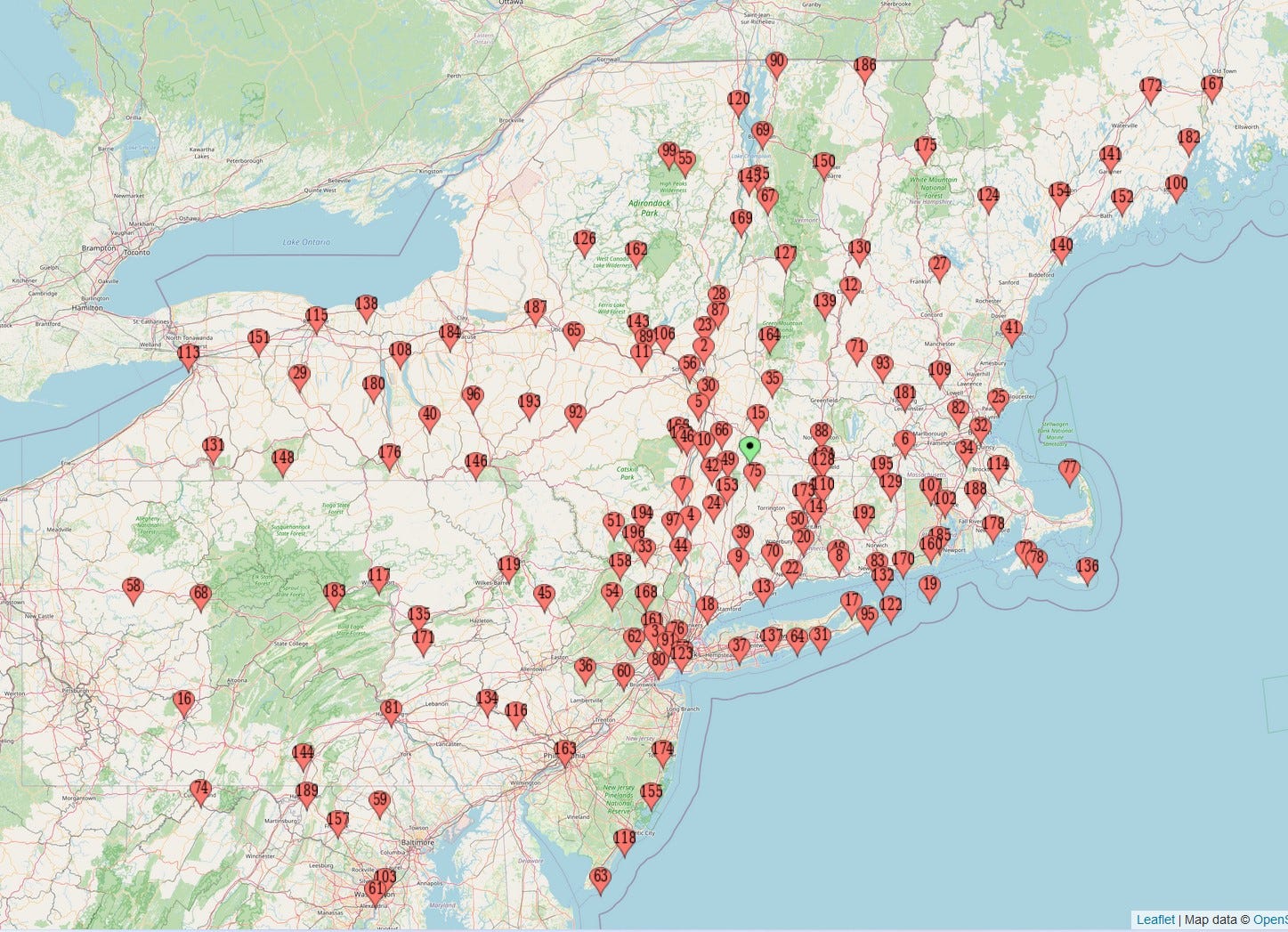
Joe Solan told me this week that he doesn’t think there’s been a significant increase in either category, suggesting the rise in the number of unique planes and origin cities is from increased adoption of ADS-B Out.
Defining “expansion” and the future
In terms of the debate over what “expansion” at the airport means, the data cuts both ways. It appears to support the airport’s contention that hangars and number of based planes may not automatically mean a dramatic increase in overall flight operations. Though in terms of efficient airport and flight-school operations, hangars would certainly reduce the amount of time airport staff spend moving aircraft, shoveling them out of the snow, and other tasks that keep planes out of the sky.
The data also make clear that a single flight school aircraft produces substantially more flight operations per year than a private plane based at the field. And that the resulting flight traffic is far more locally intense and therefore and problematic for those living nearby who have complained about its level of operations.
Former Selectman Bill Cooke focused specifically on this possibility during the 2020 special-permit discussion. “I’m more concerned about expanded use of the airport with lessons and rental planes and things like that,” he said at one hearing.
When I spoke to Cooke in December, he reiterated that view. He said he likes having “a little airport in town” but remains concerned about its growth. “We never heard ‘boo hoo’ about the airport before Walt died,” he told me. “It’s a difficult balance between the neighbors’ concerns and something that’s been grandfathered in zoning.” (Cooke voted against the permit in 2020 as did the other three participating board members.)
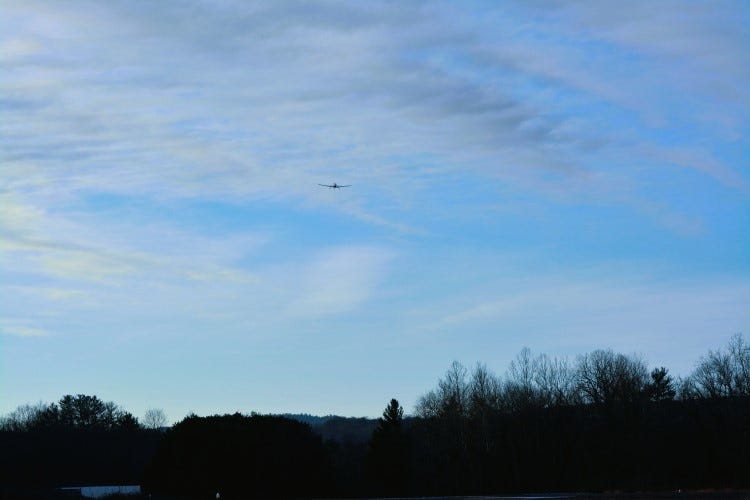
Cooke was also on the board for the airport’s prior special-permit application in 2017. He said that both times it was challenging to get an accurate sense of activity at the airport. “It was really hard to tell. I couldn’t get good information, it seemed, from either side,” he said. “I didn’t buy the information I got from either side as to how busy the airport was. It’s really hard to know who to believe because the numbers were really sketchy.”
Cooke asked for more detailed information from BAE about its current and future business plans but said he was “never satisfied with the information they presented.” He told me that he wasn’t necessarily opposed to new hangars as part of a modest, organic growth plan that allowed the airport to continue to exist. But he still had concerns. “It shouldn’t have to stop being an airport,” he said, noting its preexisting nonconforming status. “But if it’s not a viable business [with that status] then it’s not a viable business. That’s not for the Selectboard to decide.”
A busier flight school that meets current demand
When I first spoke to Joe Solan early last summer, he said there were perhaps 25 to 30 active students flying regularly with BAE. Since then, according to BAE’s chief flight instructor Jason Archer, they’ve added additional weekday training with students from a technical high school in Hudson, N.Y. And this winter, students from Berkshire School in Sheffield are again taking flight lessons on Sundays, through May, as part of the school’s aviation-science program. (Two additional full-time flight instructors started work this month.)
Things have been busy since early in the pandemic. Rick Solan told me last June that he thought pandemic restrictions were going to be “the kiss of death” for the flight school, which was shut down for three months in 2020. “Having to stand six feet apart from each other, now you’re going to be only two and a half feet from somebody [in an airplane]? Nobody’s going to do this,” he said he thought at the time. “[But] we had so many requests. We had a list a mile long of people wanting to learn to fly as soon as we opened up.”
And when I talked about the flight school again with Joe Solan in September, the pace hadn’t let up. “We’re way, way busy,” he said. “It’s kind of a good thing to be able to see that. And see that there’s been a little bit of a turn to something that was dying out a few years ago. General aviation for years was a very quiet industry.” Solan, who is a flight instructor as well as the airport’s manager, said his students remain a mixture of those learning for fun and others with an interest in an aviation career, like the one he’s pursuing—with plans to leave soon, he hopes, for an airline job.
How the Selectboard evaluates a busy, growing flight school as it considers whether to lift zoning restrictions is certain to be part of the coming debate. Rick Solan told me that he’s not likely to agree to any limits on the number of based aircraft or how many flight-school planes can be in the air at once—both were special-permit conditions floated at various times since 2017 by Fasteau and others. He’d also reject any limits on when flight-school training can happen, he said, beyond BAE’s proposal to limit continuous-and-takeoff landing practice in the early morning and beyond early evening.
Archer, who works part time at the airport despite the chief-flight-instructor title, told me earlier this month that he thinks there are limits to how busy the flight school could ever get. He pointed to capital requirements and “back-end costs” required to run a flight school, such as buying additional training aircraft and significant expenses for insurance, maintenance, fuel, and instructors. Still, he said that recent increases in activity are just part of doing business. “I think we’re doing as best we can to meet a rising demand while keeping our doors open and lights on and being responsible,” he said.
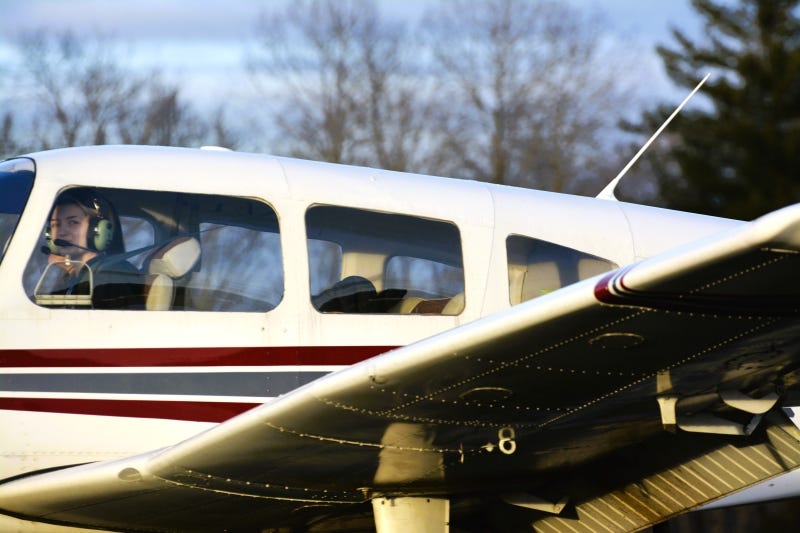
Archer also said he expects there will be ebbs and flows in the market and the broader aviation industry, as there have been for decades. He said BAE is not running advertisements looking for additional business by, for instance, promoting an opportunity for career-minded flight students to “get all your ratings at Great Barrington” and become an airline pilot, he said. In his mind, he told me, “expansion” means opening additional flight schools in Columbia County and at other airports.
As for what’s happening in Great Barrington, he thinks BAE is doing a good job, despite what’s unfolding in Land Court and what’s likely to be shared in comments from the public at the upcoming special-permit hearings. And he rejects the argument that even the substantial increase in flight-school operations should be considered an expansion of operations.
“We do recognize that we operate within a community and we’re part of that community,” said Archer, who lives over the border in Connecticut. “So it is a relationship, and I think we’re doing a decent job of it. Honestly, are we going to make everybody happy 24/7? No, probably not. But I can tell you that we respond as best we can to noise complaints and shifting [training locations] around as best we can. Do I define that as ‘expansion’? No.”
Questions for the Selectboard
When I checked in with Rick Solan on a recent Monday, he was coming off a beautiful Sunday when there was an enormous amount of activity at the airport, from flight instruction to visitors, he said. And which led to some phone calls from neighbors. At various times since last summer, he’s suggested that those bothered by airport traffic should consider that weather prevents them from flying some days; that means there’s no traffic one day and perhaps a fair amount the next.
“So, yesterday was a busy day. But you know, when it’s a good day, it’s like taking your ‘67 Chevy out, or your ‘66 Corvette,” he said. “You only take it out on good days, and people on a good day say, ‘I want to go flying.’ And I can’t say to people, ‘You know, you can’t fly today, because we’ve got too many airplanes in the air.’”
He described a busy pilot’s lounge with those students from Berkshire School waiting for their time in the air. “All the instructors were busy. And we had people fly in and take the courtesy car downtown,” Solan said. “We had a fire in the fireplace and people were like, ‘This place is hopping.’ And I said, ‘Yeah, it’s always like this.’”
He said that much of the flight traffic on that clear mid-winter Sunday was indeed from the flight school. “This time of year, it’s always mostly trainers,” he said, explaining that many of those with aircraft based at GBR don’t fly very much in the winter. Solan also said it’s been a very busy winter for BAE’s three-mechanic maintenance operation, which may have brought additional aircraft to the field. As the January 1 through February 20 numbers show, there has been a significant increase in activity during that period this year compared to prior years.
In 2017, Solan told the Selectboard that the flight school was the basis of BAE’s operation. “Fifty percent of the traffic at the airport is our students, learning to do takeoffs and landings, and that’s the cost of doing business,” he said, answering a question from Selectboard member Ed Abrahams. Like Cooke in 2020, Abrahams has long focused on what a special permit would mean for growth at the airport. During the 2017 proceeding, he had an exchange on that subject with Solan and his Selectboard colleague Steve Bannon that seems to set the stage for round three:
ABRAHAMS (to Rick Solan): I have questions about your future plans because that’s what’s concerning people.
BANNON (interjecting): Well, that has nothing to do with what we’re voting on.
ABRAHAMS: Except that one of the issues if we grant them a permit is that they can grow without having to come back for special permits … The questions about future plans are more about usage, because that’s what people seem to be concerned about, the airport getting busier … One of the concerns of the neighbors is more and more student pilots, so more and more flights, and more and more takeoffs and landings.
SOLAN: We’re a business, like any business in town. If we’re a clothing store and we want to expand, you know? I mean, we’re a business.
When the Selectboard’s hearings on the airport begin next week, those questions of current and future flight activity will be central, as they were in 2017 and 2020. And board members may want more details than last time, given what’s changed since 2020. But it’s also likely, based on their recent presentations, that the airport’s attorneys, at least, will shy away from specifics as much as possible.
Indeed, when airport attorney Dennis Egan appeared before the Board of Health this month, he suggested that compared to other matters that come before town boards, this case presents no need to focus on the future. “What we’re seeking is essentially ‘what you see is what you get,’” Egan told the three board members. “You don’t need a crystal ball to look into the future as you do most times with a special permit. We’re looking to essentially lock in place what you have at 70 Egremont Plain Road.”
NEXT: In part four, an examination of environmental issues at the airport.
∎ ∎ ∎




